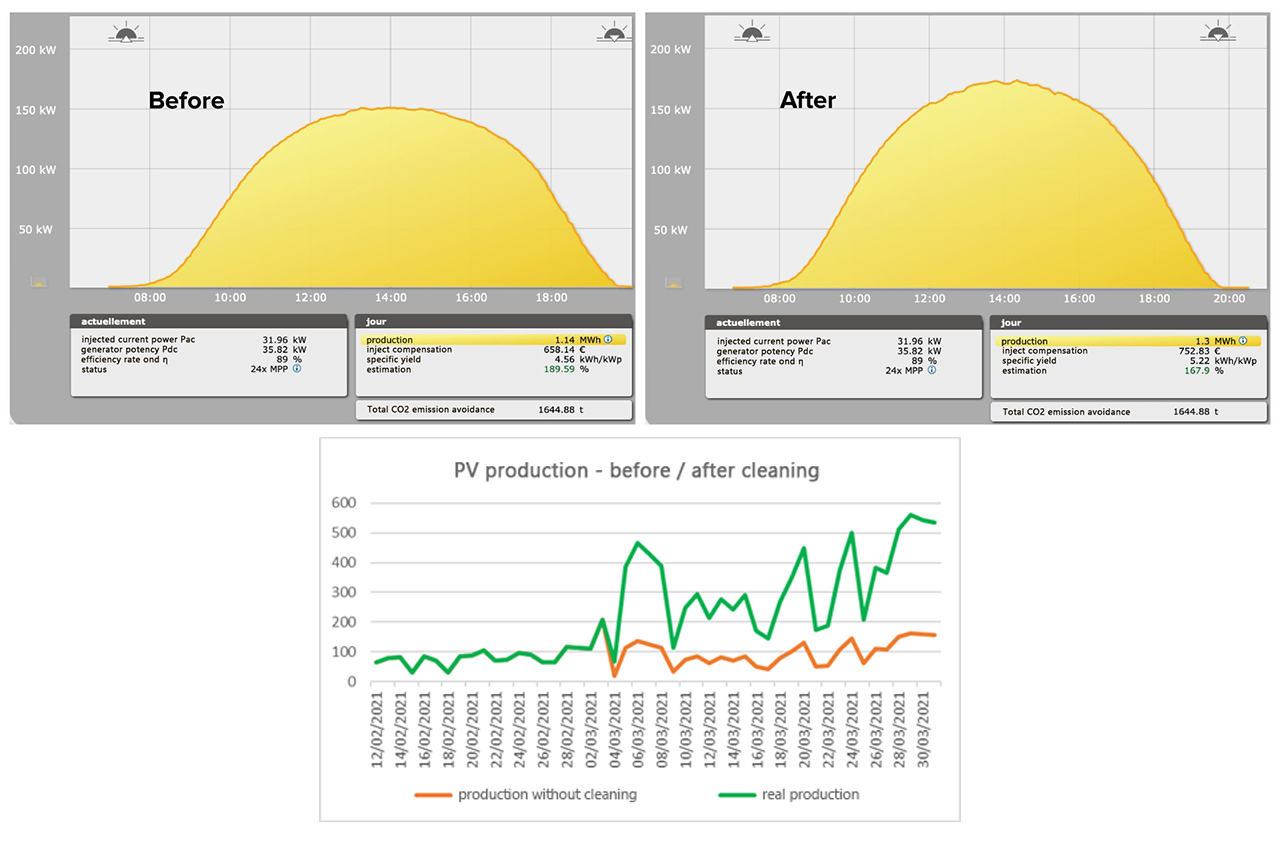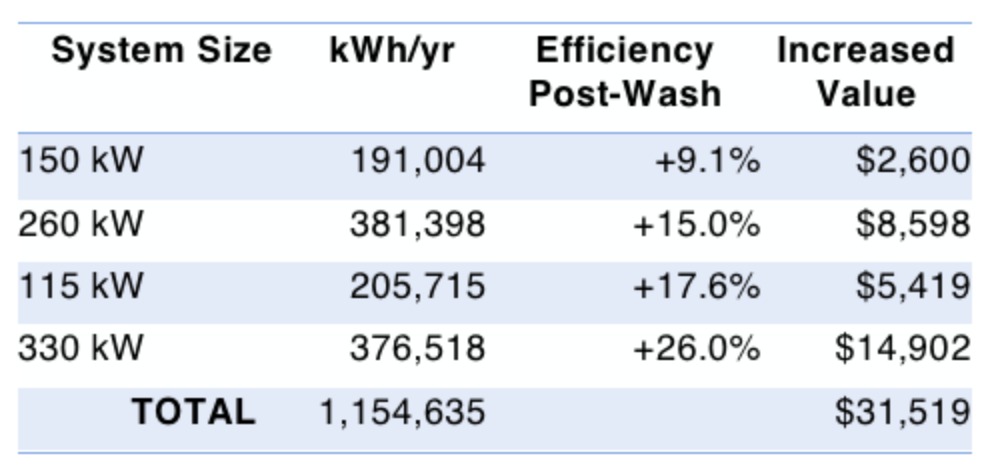Frequently asked questions
Below is a list of frequently asked questions regarding solar panel cleaning and robotic solutions to solar panel operation and maintenance (O&M).
If your question isn't answered, please contact us: support@solarcleano.com
Why cleaning solar panels?
Regular cleaning maintains your photovoltaic installation and can help it regain performance. The sunlight reflection diminishes with dirt and reduces the absorption of solar energy on photovoltaic cells.

What is the solar panel cleaning cost?
The average cleaning price varies greatly depending on the market. When calculating the price, you need to consider several factors that will influence the final cost:
1. the level of dirtiness of the installation (the dirtier the installation, the higher the price).
2. the accessibility of the installation (the more difficult the installation is to access, the higher the cost).
3. access to water (if there is no access to water, a water tank is needed, which means a higher cost; it is not a problem in the case of waterless cleaning).
4. the size of the solar installation (the larger the installation, the lower the cost per panel).
5. the type of solar installation (floating installations are more complex to clean than normal rooftops, therefore, the cost will be higher).
However, solar panels without cleaning can lose up to 2/3 of production potency. Cleaning solar panels actually helps to increase the value of power plants. As a result, cleaning solar panels is very lucrative for the cleaners.

What is the difference between manual cleaning and cleaning with a solar robot?
Comparing to robotic solar panel cleaning, manual cleaning can imply high labour cost and security issues. It is also a less efficient way in cleaning large-scale solar installations. We have summarised some major differences of cleaning manually vs cleaning with a robot:
Speed: One solar cleaning robot can replace 10 workers cleaning with manual brushes.
Security: Cleaners working at height are exposed to elevated security risk. While cleaning with robot, the operator can use remote control from ground level and access the cleaning process and supervise the cleaning robot from a LED screen monitor.
Risk of damaging solar panels: Manual cleaners may have to walk on solar panels to access cleaning surface and this can cause potential damage to solar panels and safety risks to the cleaner.
Inconsistent cleaning quality: Manual cleaning cannot achieve the same precision as robotic cleaning. Weather conditions may influence the performance of manual cleaners as well. Using a solar panel cleaning robot can guarantee a consistent cleaning quality.
Number of cleaning brushes: solar panel cleaning robots can be equipped with two brushes, covering the same area twice and therefore reinforcing the cleaning quality.
Can SolarCleano solar panel cleaning machines damage my panels?
Solar panels manufacturers allow a pressure up to 5200Pa on their panels. Since the SolarCleano robots never press more than 4000Pa on the panels, there is no risk. Thanks to the rubber pads, the robots move smoothly on solar panels without leaving a trace.
Do I need any connection other than water on the work site?
No. The SolarCleano robots are autonomous thanks to their batteries. You need neither a generator nor an electricity outlet.
Can the SolarCleano robot cleaner be used on all types of roofs?
You can use the SolarCleano solar robot cleaning solar panels on all types of roofs up to an inclination of 25° (20° for Solrif panels). Beyond this inclination, we recommend securing the cleaning robot with a safety system. However, when the panel and conditions allow, some of our customers use their robots up to 30°.
How many MW can I clean in one day?
This primarily depends on the type of installation, and the type of SolarCleano robot and cleaning brushes used. As a general guideline:
With the SolarCleano M1 you can clean 0.8MW a day.
With the SolarCleano F1 you can clean 1.5MW a day.
With the SolarCleano B1 you can clean 15MW a day.
How long is the battery life?
The standard autonomy for the SolarCleano F1 and M1 varies between 2 hours and a half and 4 hours depending on the battery used. The SolarCleano B1 can have an autonomy up to 8 hours.
What is the range of the remote control?
The remote control has a range of 250m.